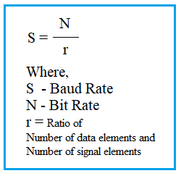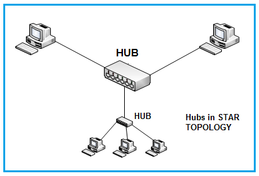
16 QAM vs 64 QAM vs 256 QAM Modulation: Differences and Applications
Explore the key differences between 16 QAM, 64 QAM, and 256 QAM modulation techniques, including bits per symbol, symbol rate, and applications.
Showing 25 posts (Page 1 of 3)
Advertisement

Explore the key differences between 16 QAM, 64 QAM, and 256 QAM modulation techniques, including bits per symbol, symbol rate, and applications.

Calculate Adjacent Channel Power Ratio (ACPR) to assess signal leakage into adjacent channels. Essential for RF planning and design.

Explore AM and FM Modulation Index formulas and use modulation index calculator to calculate modulation depth effortlessly.

Explore the pros and cons of AM and FM modulation, covering coverage, noise, sound quality, and propagation characteristics.
Explore the fundamental differences between analog and digital television technologies, including signal type, picture quality, and channel capacity.

Explore the fundamental differences between analog and digital modulation techniques, with clear examples of AM, FM, ASK, FSK, and PSK.

Explore the differences between analog and digital recording methods, including recorders, advantages, and disadvantages.
Explore the fundamental differences between analog and digital signals and data, including data types, conversion methods (ADC/DAC), mathematical representations, and transmission techniques.

Explore the fundamental differences between analog and digital switching in telecommunications. Understand their operational principles, signal types, speeds, and performance.
Explore the fundamental differences between analog and digital transmission, including signal types, distance capabilities, and attenuation handling.

Explore the critical relationship between antenna and radome distance for minimizing interference. Learn about radome thickness and optimal spacing for signal integrity.

Understand the difference between bit rate and baud rate in data communication, including formulas, units, and their relationship to bandwidth and data transmission speed.

Explore the fundamental differences between bits and symbols in data communication, including their format, usage, measurement units, and applications.

Explore the differences between C4FM (Continuous 4 level FM) and CQPSK (Continuous Quadrature Phase Shift Keying) modulation, their applications, and signal characteristics.

Explore coaxial to waveguide adapters: types, applications, and benefits in RF systems. Essential for impedance matching and signal transfer in communication and radar.

Explore the differences between constellation and eye diagrams, their applications in digital modulation, and how they represent signal characteristics.

Compare Data vs Signal and explore difference between Data and Signal used in data communication with examples.Learn how data is transformed into signals for transmission.

Calculate DDS output frequency based on tuning word, clock frequency, and phase accumulator bits. Includes formula and explanation.

Compare Active hub vs Passive hub and mentions difference between Active hub and Passive hub in computer network domain including their advantages and disadvantages.

Explore Direct Broadcast Satellite (DBS) TV technology, including receiver block diagrams, signal processing, and how it delivers high-quality digital content.

Explore Eb/No and Bit Error Rate (BER) concepts. Use our calculators to convert between C/N and Eb/No, and calculate BER based on bit errors.

Explore the differences between flat fading and frequency selective fading in wireless communication, including bandwidth, delay spread, and frequency spectrum effects.
Explore the benefits and drawbacks of frequency hopping in wireless communication, including interference mitigation, security, complexity, and synchronization.

Explore the concepts of frequency and phase in waveforms, their relationship, and methods for measuring frequency offset in both frequency and time domains.

Explore the causes and triggers of GSM handover, a crucial process for maintaining uninterrupted mobile connections. Learn about signal strength, quality, distance, speed, traffic load, and maintenance triggers.
Advertisement